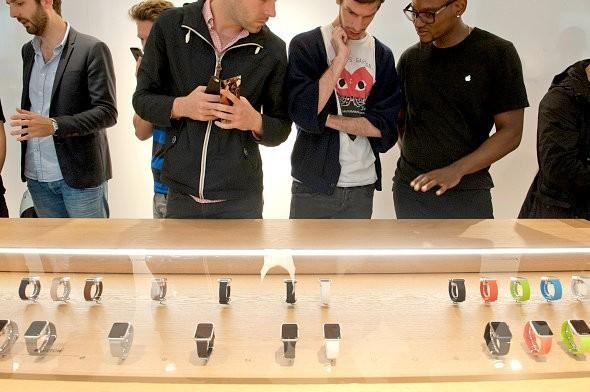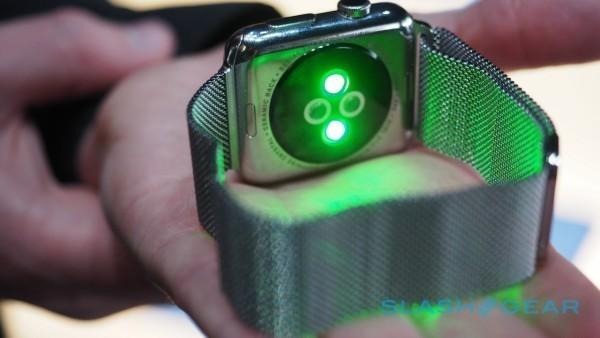Wearables and Fitness - Is it a permanent union?
We see wearables on the rise. But when we says "wearables", we mostly mean smartwatches and, more often and more ubiquitous, fitness bands. While the term "wearable" itself seems to cover a whole swathe of products, why is it that most, if not all, wearables in the market are those that we can only wear on our wrists? And why are almost all of them, even those that we don't wear on our wrists, seem to be focused, if not totally dedicated to fitness and health? Are wearables fated to be tethered to this particular use case?
Taking stock
Out of 10 devices in the wearable category, only 2 would be full-fledged smartwatches. The rest are fitness bands, most of which don't even have any sort of LCD or LED display. Varied as they may be, all of them have at least 2 features in common: they track your activity and they can notify you of events or messages. In smart bands, you can't even act on the latter, making fitness the real predominant feature across all these trinkets.

Sure, there are wearables that go beyond our wrists, but most of them are still experimental, and some are plain weird. Smart spectacles like Google Glass do qualify, and we all know how that ended up. There have also been attempts at smart lingerie, but the respectable ones we've seen also focus on tracking the wearer's heart rate for health purposes.
Cheap and safe
Why are wearable makers so obsessed with fitness and health? Well, for one, it's actually cheap to add such functionality. Most devices nowadays come with some sort of motion sensor, which can easily be turned into a pedometer. While more dedicated hardware is, indeed, needed for things like hear rate or blood oxygen monitoring, but the basics are already there.
But there might also be a less technical aspect to this bias: marketing. Wearables are still too novel and too strange, as the still existent resistance to smartwatches, which should almost be more familiar than say, a fitness band, at least in form. But not everyone is yet sold on the idea of controlling your smartphone, your appliances, or even your car from your wrist, because not everyone has the luxury of owning those in the first place.
To push the wearable device into the consciousness of the market, manufacturers need a feature that can't be done, or at least easily be done, by a smartphone. It happens that tracking your activities, your sleep quality, and your heart rate can be done best on something you can wear on your wrist or near your heart.
It is a sort of chicken and egg situation. Device makers need to appeal to something familiar and practical to everyday consumers, not just some fancy hi-tech gadget that only geeks would appreciate. But in also focusing on this particular use case, they have saturated the market with fitness wearables and, in a way, actually defined the wearable market to reflect that reality.

The value of health
This isn't an attempt to downplay the importance of health and fitness, especially for the lot of us who have grown uber dependent on the conveniences of a digital lifestyle. These device makers could very well be credited for pushing an active lifestyle into the minds of consumers.
Some might belittle or even refute the kind of healthy activity that these devices promote, but the "gamification" of fitness and health, the inclusion of scoring, leaderboards,and the like, might just be the impetus that's needed to actually make health a normal aspect of our lives.
Wearables, along with smartphones and the Internet, have sort of democratized health and fitness. Once the purview of professionals and their tools, smartwatches and smart bands have put pedometers, body mass indicators, heart rate sensors, and blood oximeters, just to name a few, in a device that conveniently fits over our wrist, some for less than $200.
While there is always a danger in "arm chair physicians", and we will always advice seeking professional counsel, these devices have helped raise even just the awareness of what our bodies need to maintain some degree of health.
Is this the future?
But are wearables bound to simply be health-oriented gadgets, with notifications and remote controls on the sides? Or can we expect more from this still very young technology niche? After all, it seems that the market has basically spoken more in favor of Fitbits than smartwatches. While it may seem that market and economic considerations do limit its potential, there is also a technical hurdle to taking wearables beyond the current lineup. Technology, electronics, and manufacturing have yet to break free from the rigid, solid forms of bracelets, headsets, and dongles. Yes, this is about flexible electronics, flexible batteries, and, in some cases, even flexible displays.
Of course, the story doesn't end here. Technology is moving in this direction, somewhat slowly but surely. Samsung and LG are notorious for their obsession with flexible, rollable, and bendable displays. With little hold in the smartphone market, Intel has turned its eyes towards even smaller devices, shrinking its chips to inconspicuously and comfortably fit even in babies' onesies.
At I/O 2015 late last month, Google reveales ATAP's latest projects. Jacquard literally weaves technology into fabric using conductive threads that could turn almost any piece of cloth into a remote control. Soli, on the other hand, removes the need to actually touch a surface, replacing screens and light sensors with radar. And if we read Apple designer Marc Newson's words right, the iPhone maker might also be interested in the intersection of technology and fashion.
The right mix of these technologies can make wearables really mean their name. Not just wrist bands or goggles, any piece of clothing has the potential to become an extension of our smartphones or computers. Apparel can be come smart devices in their own right, and our wallets can even become our tablets or smartphones. And it's not just the things that we wear ourselves. Even cushions and upholstery can embed some form of smart control. Imagine your couch becoming the real-life equivalent of a captain's chair.
Health applications are never going away, that's for sure, especially with these innovations that put technology a lot closer to our bodies. But the wearables of the future won't be tied to our wrists anymore, nor will they simply be miniature clinics. Their uses, applications, and forms might have as much potential as the fabric on which they will be woven. We just need a bit more time getting there.
